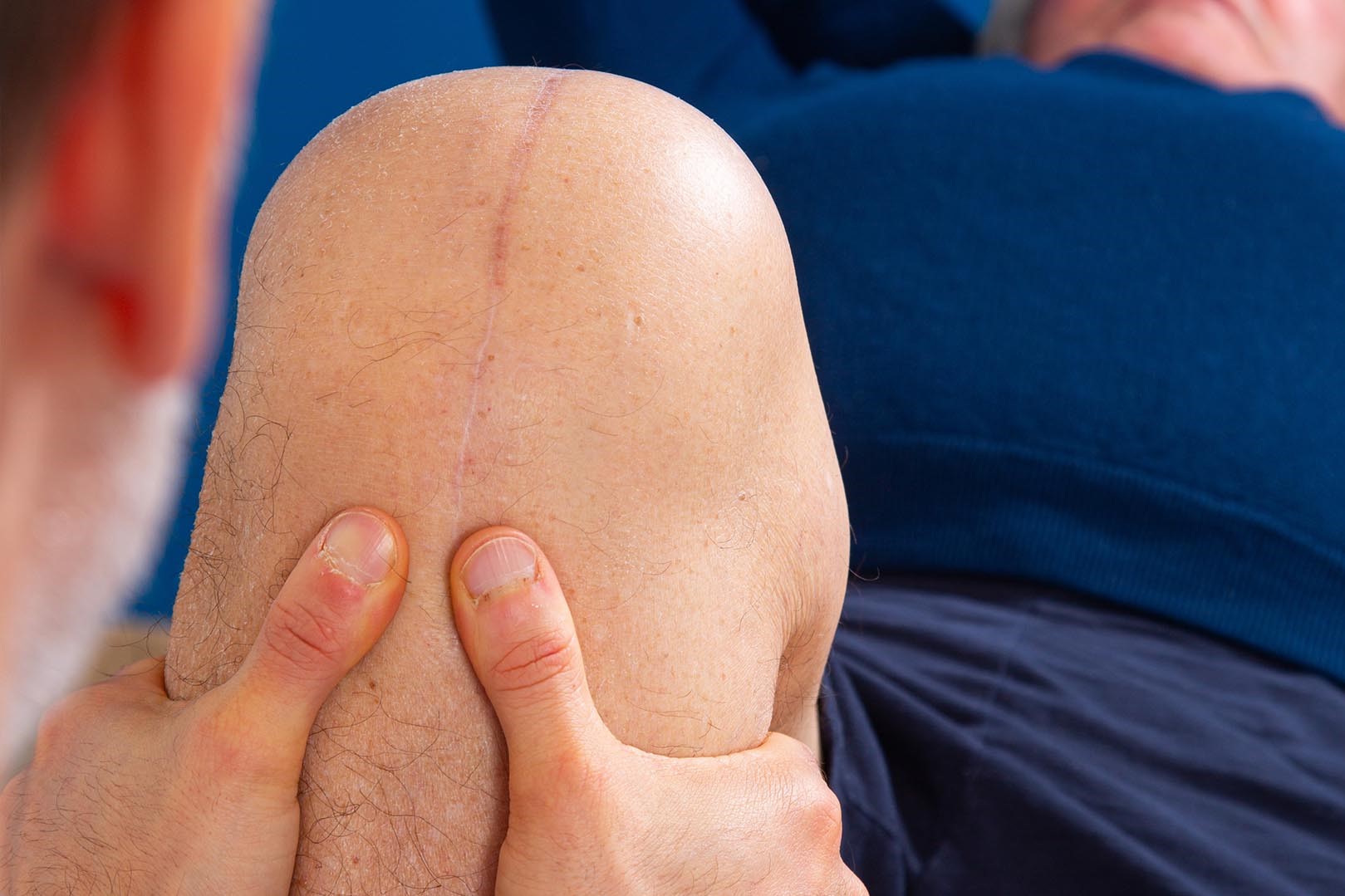
What is knee synovitis and how is it treated?
Knee synovitis is a condition that frequently affects the knee joint, causing pain and restricting a person’s ability to walk
What is synovitis
Synovitis is an acute or chronic inflammation of the tissue that internally lines the joints (synovial membrane or synovium), which causes an abnormal and excessive production of the fluid that serves to lubricate and protect the joint: synovial fluid.
This inflammation frequently affects the knee.
Symptoms of knee synovitis
The most common symptoms may include:
- swelling;
- localised pain, in an advanced stage of inflammation even at rest;
- joint locking, in the case of the presence of mobile bodies within the joint;
- redness and localised heat sensation.
Causes and treatment of knee synovitis
The pathology, in its various manifestations, is treated with different methods depending on the triggering causes. We discuss these in more detail with the specialist.
Arthrosis
In patients suffering from arthrosis, an ‘arthrosynovitis’ scenario may occur, causing the release of cartilage or meniscal fragments within the joint.
In this case, arthroplasty, i.e. the surgical replacement of the damaged joint with a prosthesis having the same shape and characteristics, is used in the most severe situations.
Mechanical alterations
Some morpho-functional alterations to the knee joint can be induced by mechanical factors such as
- joint overload: e.g. varus knee or valgus knee;
- intra-articular pathology: such as aseptic necrosis (a necrosis of bone tissue due to inadequate blood supply to the area) or osteochondritis dissecans (the degeneration and fragmentation of cartilage and bone), etc;
- post-traumatic injuries: meniscal trauma, etc.;
Therapy in these situations consists of removing the underlying cause of the synovitis such as the meniscus lesion or the mobile body(s) present within it by means of arthroscopy: an endoscopic procedure that allows the health of the joint to be assessed from the inside, as well as to proceed operationally with therapeutic activities.
Chondrocalcinosis
Chondrocalcinosis is a disease characterised by the deposition of calcium pyrophosphate crystals in all component structures of the joint, in this case the knee.
Treatment is generally medical and consists of the use of:
- anti-inflammatory drugs;
- local steroid infiltrations.
Rheumatoid arthritis or psoriatic arthritis
The characteristic sign of rheumatoid arthritis and psoriatic arthritis is a proliferative synovitis, i.e. leading to a progressive destruction of the articular cartilage and the underlying bone.
The pharmacological treatment indicated by the rheumatologist may be associated with a synovialectomy, i.e. the total or partial surgical removal of synovial tissue that then regenerates.
However, if the bone impairment processes are too advanced, an arthroplasty must be performed.
Synovial chondromatosis
Synovial chondromatosis is a tumour-like pathology, generally benign, characterised by the presence of mobile cartilage calcifications in the joint and/or nodules in the synovial membrane.
In this case, the treatment is surgical and, depending on the number and size of the mobile bodies, can be performed in:
- arthroscopy (preferably);
- with open technique.
Pigmentous villonodular synovitis (PVNS)
Pigmentous villonodular synovitis (PVNS) is a rare benign disease that mostly affects young adults and is characterised by tumour-like swellings that proliferate within the joint in question.
Also in this case, treatment is surgical with arthroscopy or, if the lesions are multiple and more voluminous, with an open technique.
How knee synovitis is diagnosed
Just as with treatment, the diagnosis of knee synovitis can take different forms depending on the primary causes of the condition.
It always starts with an objective examination by the doctor to which, subsequently, instrumental examinations can also be associated, which specifically are for
A) arthrosis:
- X-ray X-ray
- magnetic resonance imaging MRI.
- mechanical causes:
- X-ray X-rays;
- magnetic resonance imaging MRI.
B) chondrocalcinosis:
- examination of synovial fluid by arthrocentesis (i.e. needle aspiration, ed.);
- X-ray X-rays.
C) rheumatoid arthritis or psoriatic arthritis:
- blood tests that can detect possible inflammation and diagnose possible rheumatological or auto-immune diseases (ESR, Pcr, rheumatoid factor, anti-citrullinated peptide antibodies, HLA-B27 antigen etc.);
- X-rays;
- ultrasound scans.
D) chondromatosis:
- CT computed tomography;
- X-ray radiographs.
E) villonodular pigment synovitis (PVNS):
- X-ray X-ray
- magnetic resonance imaging MRI;
- synovial biopsy (taking a small fragment of synovial membrane for diagnostic purposes).
Remedies to alleviate synovitis
As an adjunct to synovitis treatment, a number of common-sense remedies may be indicated to provide partial pain relief or promote the healing process, such as
- cold compresses and/or physiotherapy therapies, both in the acute and chronic phase. Cold, in fact, exerts an anti-inflammatory and pain-relieving action;
- rest: in the event of a mechanical cause, resting the joint can be beneficial. Rheumatic and degenerative diseases, on the other hand, unfortunately do not respond to rest.
Read Also:
Emergency Live Even More…Live: Download The New Free App Of Your Newspaper For IOS And Android
Finger Twitching: Why It Happens And Remedies For Tenosynovitis
Shoulder Tendonitis: Symptoms And Diagnosis
Tendonitis, The Remedy Is Shock Waves
Pain Between Thumb And Wrist: The Typical Symptom Of De Quervain’s Disease
De Quervain’s Stenosing Tenosynovitis: Symptoms And Treatment Of ‘Mothers’ Disease’ Tendinitis




